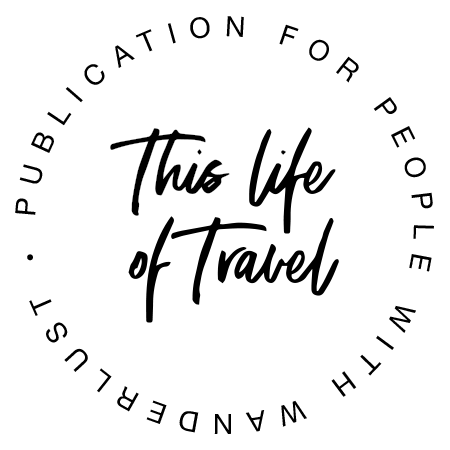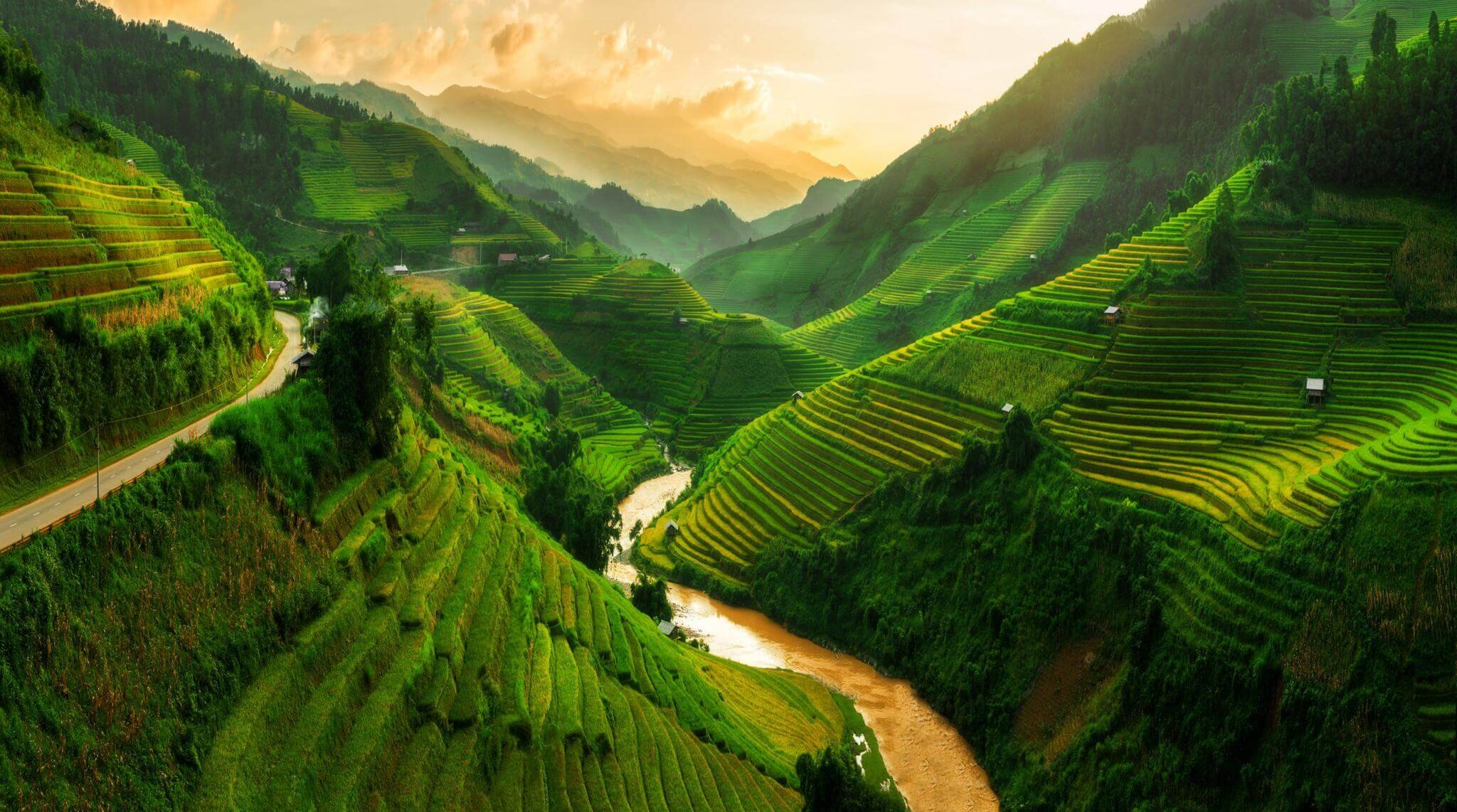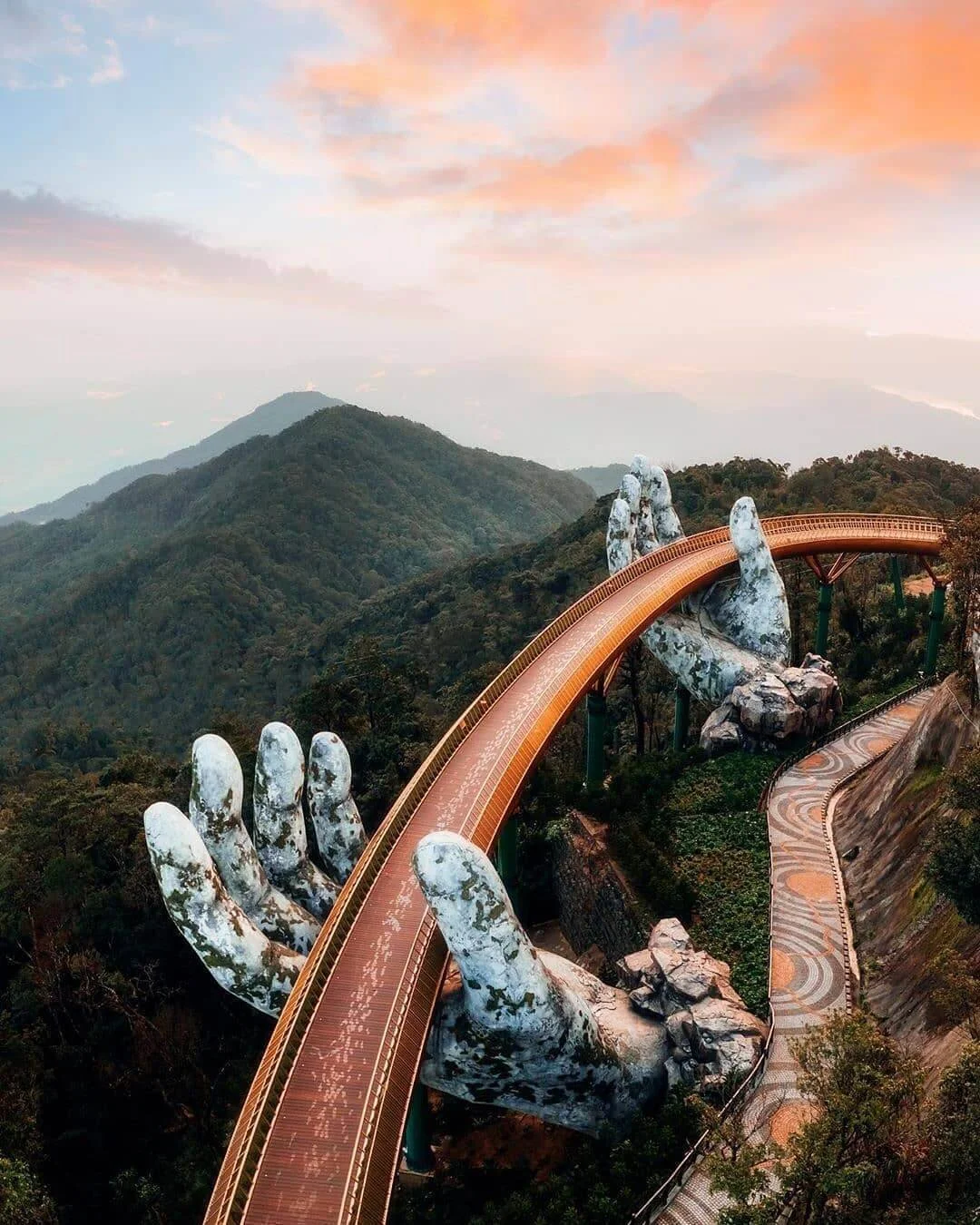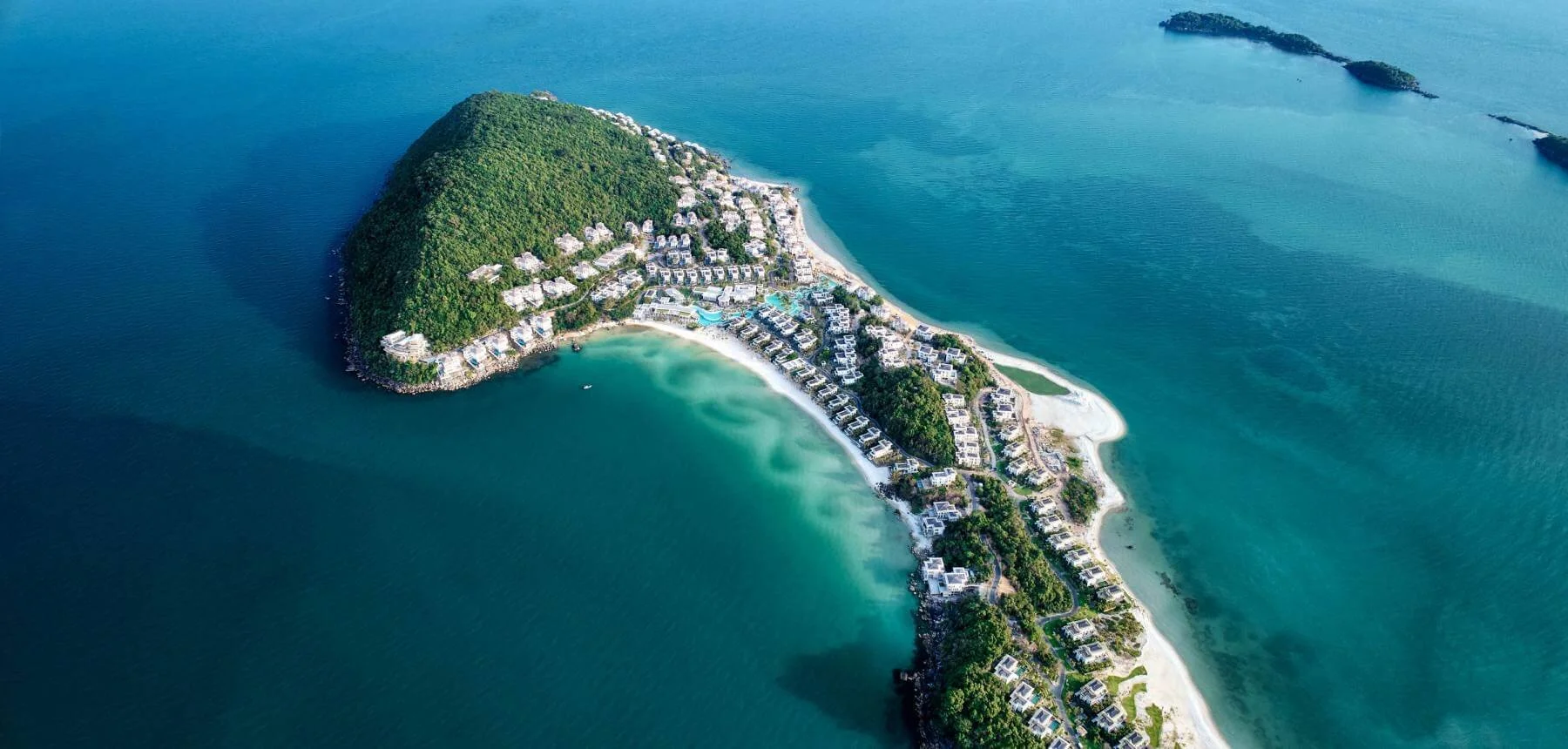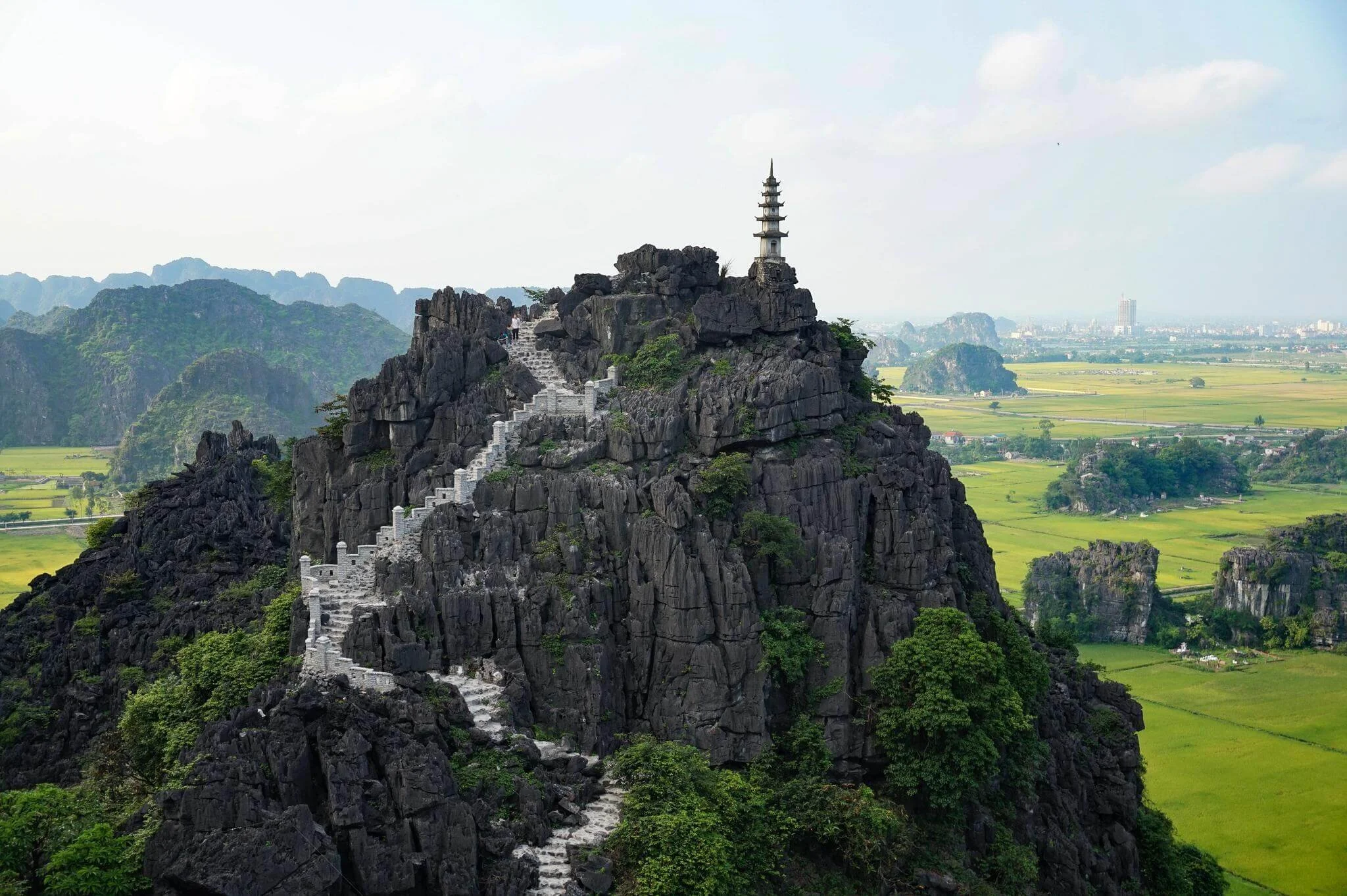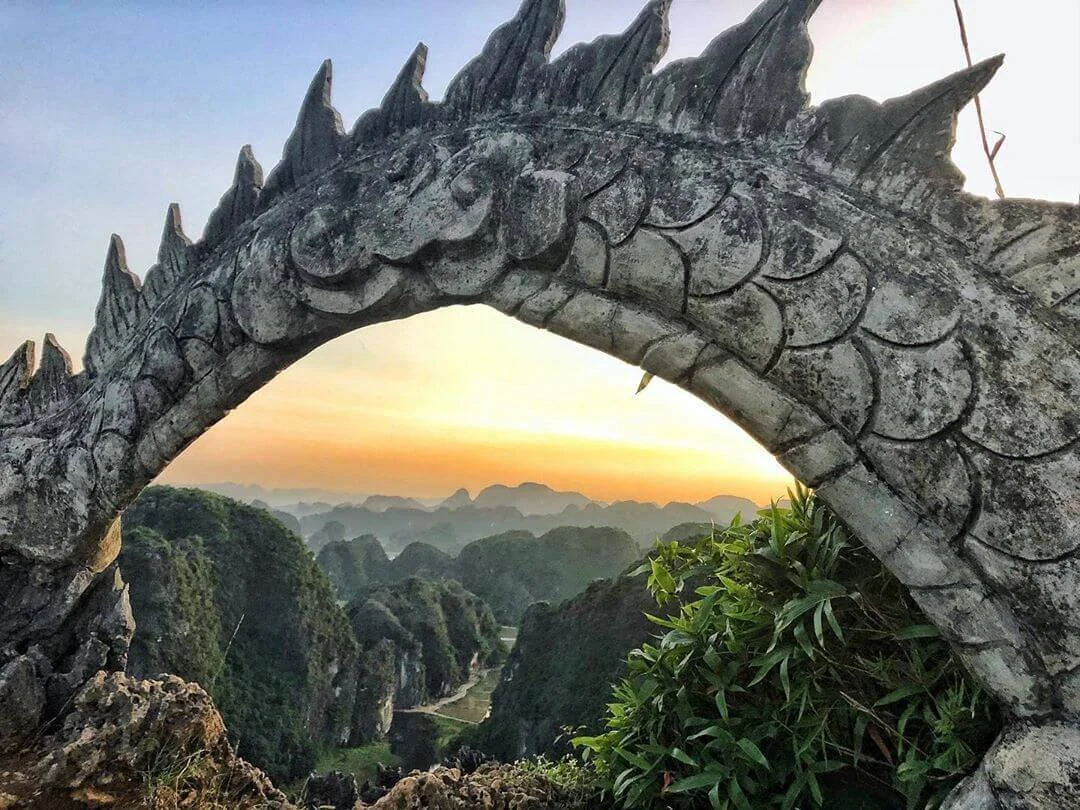Vietnam - Best Time To Visit
Since the south and the north of Vietnam has such different climates, deciding the best time to visit greatly depends on how much of the south and north you’re planning to see on the same trip.
Vietnam is a long, narrow country spanning 1,025 miles (1,650 km) from north to south.. about as long as driving from San Francisco to Seattle. Due to this, the weather and climate in the north vary dramatically to the south.
Table Of Contents
Best Time To Visit Vietnam
Visiting the whole country - November through April would be your best bet for the least amount of rain and manageable temperatures. Seeing all of Vietnam in two weeks is totally doable at a quick pace and in a month for a more relaxed pace.
Visiting the South - December through April for clear skies and dry weather.
Visiting the North - March & April or October & November for clear skies and good temperatures.
Visiting the Center - April through June for sunny days and clear skies.
You might also like:
Weather in Vietnam
The monsoon season (April - September) defines the weather in Vietnam, so unless you like rainy days and muddy roads, it’s best to avoid traveling during these times.
The south of Vietnam stays hot and balmy much year round while the north has more of a full season. The first time I traveled through Vietnam, I was shocked at how cold it was up north! I had to buy a couple of sweaters and long pants just to stay warm.
For the north of Vietnam, the best time to visit is either Spring (March/April) or Fall (September - October) as these are the driest months. But be prepared with layers as it tends to get chilly up north compared to the south, especially in the mountainous regions near Sa Pa.
For the south of Vietnam, the best time to visit is December through April. You'll experience clear skies and warm temperatures. Bring sunscreen, bug spray, and flip flops!
Fall
September - The monsoon rains are on the way out in the north and south, but temperatures are still high. The center of Vietnam starts to get their monsoon season started.
October - This is the time to explore the north, especially trekking or motorbiking through Sa Pa, Ha Giang, and Mai Chau. The south remains warm and a great time to explore the area. Avoid the center of Vietnam since major rains can cause flooding there.
November - Both the north and south are great places this time of year. This one of the best times to visit Ha Long Bay, weather wise.
Check this out:
Winter
December - This is a great time for large parts of the country for sunshine and dry weather. It’s also a perfect time to check out some of Vietnam’s beautiful beaches at Phu Quoc or Mui Ne.
Ho Chi Minh City (Saigon) usually has perfect temperatures averaging 78F/26C.
Hanoi and the north are a bit more chilly, so bring a jacket.
January - The south continues having fantastic weather. Exploring Ho Chi Minh (Saigon) and the southern beaches are a favorite during this time of year.
The north is dry but having its coldest time of the year. There is also persistent mists at Ha Long Bay, which could spoil your views there. But if trekking is your thing up north, this is a great time due to the dry conditions.
The center starts to dry up a bit, so a visit to Nha Trang or Da Nang could be in the cards.
February - One of the months where the weather is pretty great throughout all of the country, you’ll be spoiled for choice on what to do.
Beach bums will love the weather in the south and center of Vietnam while the north will be a tad bid warmer with clear days.
But you’ll want to avoid visiting during Tet, the Vietnamese Lunar New Year celebration, as most of the country literally shuts down for about a week. Tet is based on the lunar calendar, so it moves every year. Make sure to check ahead when Tet is happening if you’re traveling to Vietnam in late January through February.
November through February is also a great time to visit Laos - which is right next to Vietnam. If you’re headed over to Laos too, here are some things to do in Luang Prabang.
Spring
March - Probably the best month to visit, especially for trips from bottom to top, the weather in all areas of the country are perfect.
In the north, the temperatures keep rising a bit, with clear skies. Ha Long Bay has clear skies as well, so you’ll be able to see the limestone karsts easily.
The south and central coast is balmy and hot, which is perfect for those beach days. It’s a great time to visit Da Lat and the surrounding areas. I’d recommend doing a motorbike tour of the Ho Chi Minh Highway.
April - Still a great time to visit, you’ll start to see some rain pop up in the north, but it’s a great time to explore with some spring flowers blooming in the mountainous northern region.
The center is at it’s best, so make sure to visit Hoi An, Hue, Da Nang, and Nha Trang.
The south has some rain, but it’s still warm and balmy - perfect for beach lovers.
You might like:
Summer
May - This would be considered somewhat of a shoulder season for the north and south as rain begins to creep up, mostly in the afternoons. This could be a great choice for better prices, less crowds, and still nice weather.
The central coast is where it’s at now if you like hot, sunny days.
June - The Monsoon season starts in the south with major rainfall and possible flooding. The north starts to receive rainfall too, which might make trekking a bit uncomfortable. Hanoi is still somewhat dry though, making it a good choice. The central coast is the place to be with it’s dry weather and sunny days. Overall, there are less tourists visiting in June, which some travelers love.
July - Similar to June, lots of monsoon rain will be coming down in both the south and north, with some rain hitting the central highlands as well. Nha Trang and the central coast are still experiencing good weather though. If you don’t mind the wet conditions, this could be your time to explore without the crowds or peak prices.
August - The central coast is still the place to be, but some rainy days start to creep in. The south is still in the midst of rainy season, but there are plenty of hours in the day without rain. The north however is experiencing peak rain season, so avoid the north.
Visiting During Monsoon Season
Having a good time in Vietnam during monsoon season isn’t unheard of, as you’ll have many of the tourist sites to yourself, get better deals on hotels, and save money on transport.
The downsides would be dealing with rainy days, a deluge of mosquitos, and possible delays with transportation.
You’d also need to have a bit of a flexible travel schedule to mix things up as needed.
I’ve traveled through other parts of Southeast Asia during monsoon season and found it quite refreshing, so this is totally an option.
